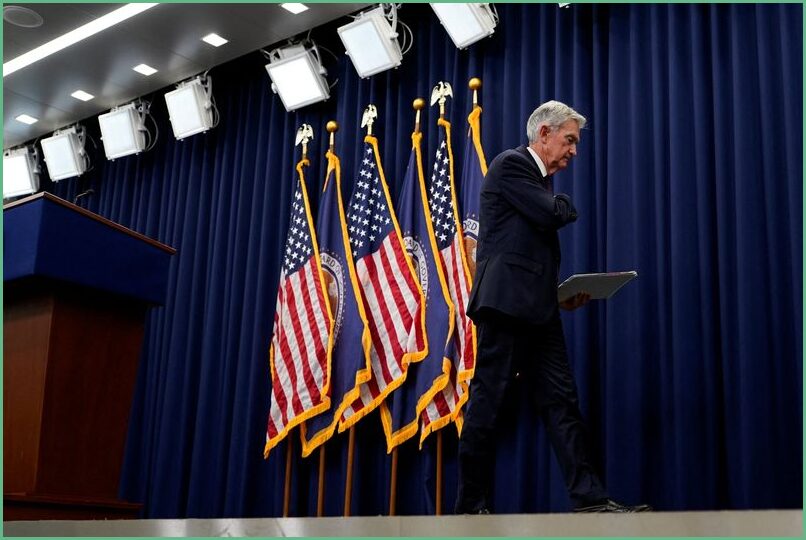Instant View: Fed’s Powell says economy on firmer footing, QT end in view
Through September the U.S. labor market remained mired in low-hiring, low-firing doldrums. Federal Reserve Chair Jerome Powell said the economy “may be on a somewhat firmer trajectory than expected,” a cautious nod to improving momentum on Tuesday.
He said policymakers will go “meeting-by-meeting” on any interest-rate easing, trying to square lingering job-market softness with inflation that remains well above the Fed’s 2% goal. That language keeps the central bank flexible without promising a set timetable for cuts.
Powell also said the end of the central bank’s long-running effort to shrink the size of its holdings, widely known as quantitative tightening, or QT, may be coming into view. That remark prompted traders to rethink how quickly the Fed might ease pressure on financial conditions.
The lines came from a prepared speech to the National Association for Business Economics in Philadelphia. It was framed and delivered as part of a careful public script rather than an impromptu comment.
Market moves were muted. Stocks slightly pared losses, with the S&P 500 roughly flat and the Nasdaq down about 0.3%.
U.S. Treasury yields slipped as the tone softened, with the 10-year dipping to around 4.04% and the two-year near 3.495%. Those moves reflected a modest pullback in rate expectations.
The dollar cooled as well, the index easing roughly 0.2% to near 99.06. Currency traders read the Fed’s cautious tilt as mildly dollar-negative.
Analysts said Powell appears intent on keeping options open, signaling confidence while leaving room to respond if job metrics deteriorate. That balancing act aims to avoid shocking markets while preserving policy flexibility.
“I don’t think (Powell) is changing his tune whatsoever. He’s saying that the economy is on solid footing, but he’s also saying we have weakness. What he’s doing is he’s preparing the markets for a series of rate cuts, but not necessarily in a sequential order.”
“He’s saying is he’ll cut (interest rates) by 25 basis points at the end of this month then they’ll assess the situation. And if the labor market continues to weaken and actually loses jobs, then he might be setting us up for a jumbo cut of 50 basis points in December.”
“He’s preparing the markets for a rate cut, but he also doesn’t want the markets to assume rate cuts are a given. He’s using labor market weakness as a hedge.”
Traders say the market remains driven by positioning and sentiment more than any single speech. That dynamic has been visible in reactions to tariff-related tweets and other headline-driven moves.
Michael James, an equity sales trader in Los Angeles, put it bluntly from the trading desk. He highlighted how recent headlines and flows mattered more than prepared remarks.
“I don’t think any of these comments from Chairman Powell are going to have any direct impact on the overall market. It continues to be a market of sentiment and positioning. The Trump tariff tweet from Friday, causing all of the decline, seemed to get shrugged off with some of the comments over the weekend. We had a decent rally yesterday and pulling back this morning on some of the China shipping moves but that also was being relatively dismissed. You can see that in the magnitude of the rally that we’ve had from this morning.”
“The bulls remain fully in charge and until that’s shaken with something more significant than these comments from Chair Powell or anything else, that’s likely to be the case into the start of third-quarter tech earnings next week.”
“There are bigger factors in place related to positioning and up the start of tech earnings season next week that are going to be far bigger determinants of the market’s direction than these comments from Chair Powell will be.”
